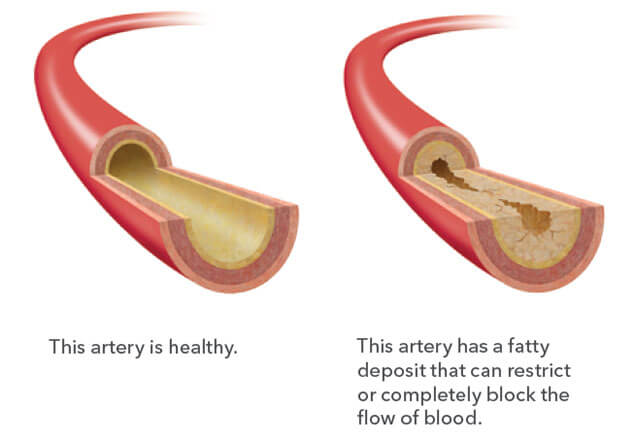
What is PAD?
Peripheral arterial disease (PAD) is the result of narrowing of the arteries in the legs, stomach arms, and head. PAD is usually caused by atherosclerosis, a disease that causes arteries to harden due to a buildup of plaque. Symptoms of PAD include pain or cramping in the thigh, calf, or hip, especially during exercise; numbness and weakness in the legs; sores on toes, feet, and legs that will not heal; coldness in the lower leg and feet; and shiny skin on legs and/or feet.
Physical activity
Exercise is the first step to improving the symptoms of PAD. Patients suffering from PAD must have a modified exercise program because of different risk factors that come along with the disease. The objectives of exercise for PAD is to lessen the symptoms, improve walking, improve exercise capability, decrease physical disability, and to also decrease the chance of potential cardiovascular events resulting from PAD.
Avoid tobacco
If you smoke, quit. If you don’t smoke, don’t start. Not only does smoking cause cancer and other diseases, it also plays a factor in PAD. Smoking can make symptoms worse, and it can increase the risk of PAD by 2-6 times.
Eat right
Having a heart-healthy diet is key to preventing PAD and also to managing the symptoms. Foods that are low in fat and high in omega 3’s are essential. Also getting the recommended daily amount of fruits, vegetables, and whole grains are a part of a heart-healthy diet. Foods to avoid are red meats, sugary foods and beverages, and foods high in sodium. Also, patients are encouraged to limit the intake of alcohol.
Keep cholesterol down
What nutrients cause cholesterol to rise? These nutrients are saturated fats, mostly found in foods that come from animals. Another culprit is foods that contain trans-fats, which are hydrogenated fats and oils mostly found in baked goods, margarine, and coffee creamer.
The good news
Not all fats are bad! Monounsaturated and polyunsaturated fats will actually help lower blood cholesterol levels. Foods such as avocados, nuts, peanut butter, and tofu are high in these nutrients. Talk to your doctor about setting up a diet and exercise program that is right for you.
References
About Peripheral Artery Disease (PAD). http://bit.ly/1sHOAUf. Accessed June 16, 2016.
Prevention and Treatment of PAD. (n.d.). Retrieved July 20, 2016, from http://www.heart.org/HEARTORG/Conditions/More/PeripheralArteryDisease/Prevention-and-Treatment-of-PAD_UCM_301308_Article.jsp#.V4-wr2NwTHg.
Living With Peripheral Artery Disease. – NHLBI, NIH. http://1.usa.gov/1UXdS77. Accessed June 16, 2016.
Peripheral artery disease (PAD). Symptoms and causes. http://mayocl.in/1W1hH0d. Published 2015. Accessed June 16, 2016.